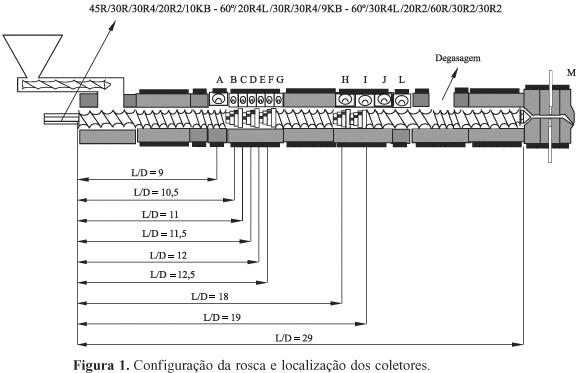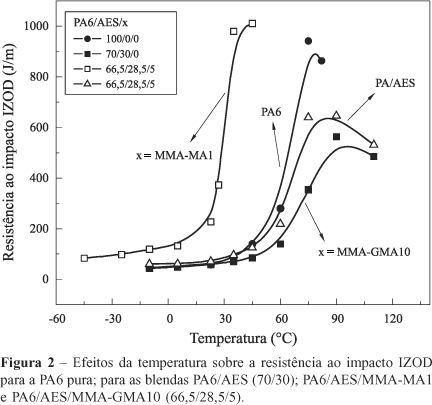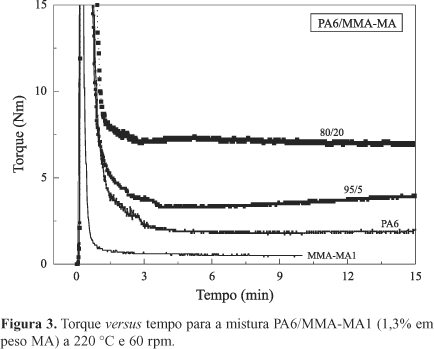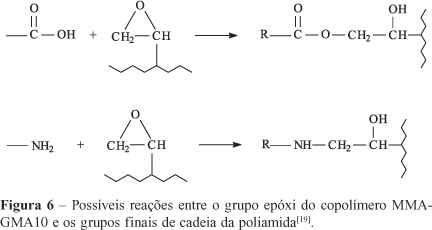The evolution of phase morphology in non-reactive vs reactive blends with polyamide and ethylene-propylene-diene elastomer grafted with styrene-acrylonitrile copolymer (AES) in a co-rotating twin-screw extruder was investigated. The morphological evolution of these blends along a twin-screw extruder was monitored by quickly collecting small samples from the melt at specific extruder barrel locations and characterizing them with a transmission electron microscope (TEM). The copolymers methyl methacrylate-co-maleic anhydride (MMA-MA) and methyl methacrylate-co-glycidyl methacrylate (MMA-GMA) were used as compatibilizing agents. The maleic anhydride and the epoxy groups of the copolymers can react with the polyamide end groups during melt processing and improve the interphase interaction in the PA6/AES system. The uncompatibilized blends showed a coarse phase morphology where the AES phase is not well dispersed in the PA6 matrix due to lack of adequate interaction between the components. The addition of MMA-GMA compatibilizer neither promoted good phase dispersion or improved the mechanical properties of the blends, probably because the possible reactions are very slow and may not occur inside the extruder. On the other hand, the addition of the MMA-MA copolymer promotes better impact strength and good phase dispersion in the blend. The AES particles undergo significant reduction in the first stages of the mixture inside the extruder. The morphology observed for the injection molded specimens was correlated with the mechanical properties.
Polyamide; reactive compatibilization; morphology
















